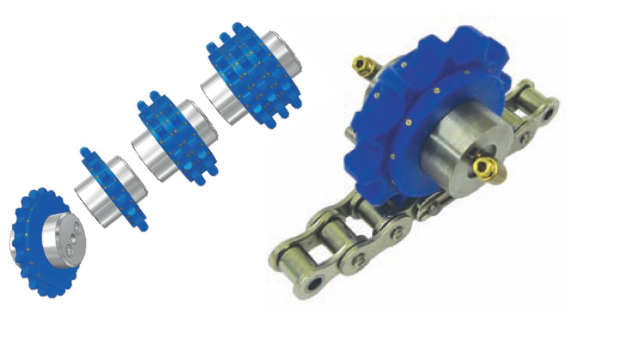Traditionally there have been four main chain lubrication methods all of which have functional issues.
Manual Application.
The lubricant is either applied by hand or spray can. This method is costly, and can be erratic, because they depend exclusively on the human element to ensure that the lubrication is carried out. It is often the case that the chain is over lubricated when a lubrication schedule takes place, but, critically the film of lubricant is not maintained in-between lubrication cycles.
Drip Feed Application.
Often seen as a step forward from manual lubrication, the drip feed solution introduces a degree of automation, with a pump delivering a measured quantity of lubricant. The problem with drips is that they vary in size and trajectory. The part of the chain that requires lubrication may not always be the location where the drip lands. The potential for having lubricant in unwanted places is significant and costly.
Static brush application.
Promoted as a further step-up - the static brush coupled to a pump which controls the frequency and volume of lubricant delivered, still leaves the customer with problems. On installation, trials need to be rigorous as the brushes are vulnerable to damage. Additionally, this method demands regular and timely maintenance, as the application brushes can clog with dirt from the chain and the bristles often wear at unpredictable rates. This can leave key areas of the chain out of contact with the lubricant. In certain environments the brush will compact debris into the chain thereby preventing lubricant penetrating the articulating parts of the chain.
Spit/spray system.
Currently the most commonly installed lubrication system for chains on large installations. It is expensive to install, often involving a complex plc to control both the timing and volume of lubricant. Extensive pipe-work is also often required to attempt to ensure that the lubricant goes where it is required, and that not too much of it goes ‘elsewhere’. Variable chain speeds cause these types of system to miss the vital lubrication points of the chain.
With all of these systems there are also a number of common issues. Over lubrication can cause the chain rollers to slide leading to flat spots, which can cause the rollers not to roll. This can also causes product contamination and environmental issues – not to mention the wasted cost.
Under lubrication will cause the chain to wear and break down prematurely. Over time there is also a danger of inaccurate lubrication. It is widely recognized that, at some point, the chain stretches (wears), which moves the pitch of the pins. The static lubrication points of the spray nozzles cannot compensate for this. Manual intervention is required to reset the system, a costly exercise. Nozzles can also get damaged and knocked out of position, so that even if the system is operating, the lubricant is not penetrating the pins exactly where required
The patented RotaLube system offers a innovative and precise method of applying the right amount of lubricant to exactly the right place on the chain no matter what the speed and size of the chain and how frequently the speed varies.
Designed to fit precisely all standard chain sizes (both British Standard & American Standard); the RotaLube applicator delivers lubricant directly to the exact points required, in a controlled and consistent manner. As the applicator moves with the chain, the issue of wear is eliminated; it will not get blocked by dirt or debris, and will maintain accurate lubrication overtime, whatever the condition of the chain and pins. Its design negates the need for complex control systems and intricate pipe-work. Installation times are significantly reduced compared to alternative systems, and should an applicator get damaged, a replacement takes only minutes to fit.

















